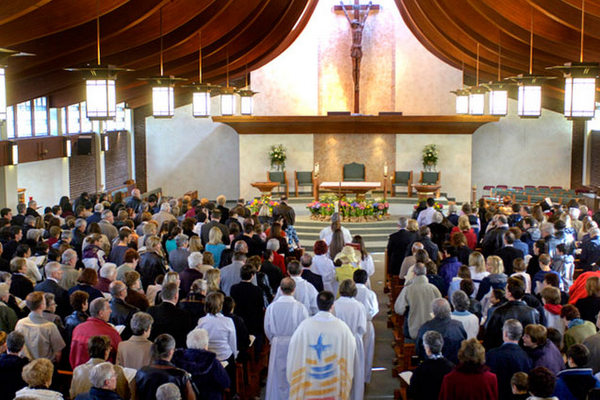Hispanic Lenten practices

The Living the Eucharist program aims to help parishioners deepen their faith.
Hispanic tradition
According to a survey of ethnic groups in America, “Hispanics are most likely to embrace the idea of sacrifice or giving something up” for Lent, says Christianity Today. Fr. Luis Aponte-Merced, raised in Puerto Rico, can relate.
During Lent when he was a child, “We didn’t go to parties; we didn’t dance. From Holy Thursday to Holy Saturday, we were not allowed to play. TV and radio stations would only play religious music.” Nowadays, “It’s different. The younger population is not so much into that anymore.”
Fr. Luis is Parochial Vicar at St. Joseph & Maximilian Kolbe Catholic Church in Orlando, Fla., a blended parish with a blended staff: He serves alongside three brothers from Holy Name Province. Among the parish’s 2,500 families, the Hispanic population is mostly from the Caribbean and Philippines. With today’s less-strict Lenten observances, “It’s not so much about giving up, but turning to God in special ways,” Luis says. “Daily prayer is important, and attending Mass daily, doing the Stations of the Cross. Many of them will not eat meat on Wednesdays and Fridays. Some of the ladies dress more simply and don’t wear makeup for Lent. One of them told me, ‘It’s sacrificial in a way that we feel it ourselves but don’t go around telling everyone. We want a thing that will help us improve ourselves.’”
Within the parish, “What we’re doing for Lent is a program called ‘Living the Eucharist’ by Paulist Evangelization Ministries.” Meeting in groups of eight to 10, participants are immersed in prayer, Scripture studies and instruction in the Eucharist. Based on the number enrolled – 33 groups were formed – many are seeking to deepen their faith, for Lent and beyond. “What we’re trying to tell people is that the Eucharist is not just something you come to church to receive,” Luis says. “You take it with you.”
(Learn more about the program at www.livingtheeucharist.org.)
This story first appeared in the SJB News Notes.
Posted in: Lent and Easter
